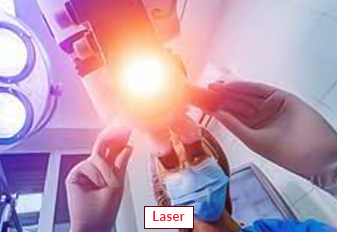Glaucoma Surgery

Glaucoma is a group of eye diseases that can cause vision loss and blindness by damaging the nerve in the back of your eye called the optic nerve. The optical whim-whams sends visual information from your eye to your brain and are vital for good vision. Damage to the optical whim-whams is frequently related to high pressure in your eye. But glaucoma can be true with normal eye pressure.
This type of surgery is used to treat several types of glaucoma, including congenital glaucoma, neovascular glaucoma, and glaucoma caused by an injury. It’s done in a hospital and usually takes 1 to 2 hours.
Book an AppointmentAbout Glaucoma Surgery
Glaucoma surgery is a type of procedure that is performed to help reduce intraocular pressure in the eye and prevent further damage to the optic nerve. In India, there are several types of glaucoma surgeries available, including trabeculectomy, glaucoma drainage devices, and laser surgery.
It is a habitual, progressive eye complaint caused by damage to the optical whim-whams, which leads to visual field loss. One of the major threat factors is eye pressure. An abnormality in the eye’s drainage system can beget fluid to make up, leading to inordinate pressure that causes damage to the optical whim-whams.
Procedure of Glaucoma Surgery
There are several types of glaucoma surgery procedures, and the specific procedure used will depend on the patient's individual needs and the surgeon's recommendation. The most common type of surgery for glaucoma is called trabeculectomy. It involves removing part of the eye-drainage tubes to allow fluid to drain more easily.
Here is a general overview of the steps involved in a typical glaucoma surgery procedure:
Anesthesia: The first step is to administer anesthesia, which may be either local anesthesia or general anesthesia, depending on the patient's preference and the surgeon's recommendation.
Incision: The surgeon will then make a small incision in the eye to access the trabecular meshwork or other drainage structures.
Drainage device placement: If a glaucoma drainage device is being implanted, the surgeon will insert the device into the eye and secure it in place.
Trabeculectomy: If a trabeculectomy is being performed, the surgeon will create a small flap in the sclera and remove a small piece of the trabecular meshwork to allow fluid to drain out of the eye.
Laser surgery: If laser surgery is being performed, the surgeon will use a laser to make a small opening in the trabecular meshwork or other drainage structures.
Closure: Once the procedure is complete, the surgeon will close the incision with tiny stitches or with self-sealing incisions.
Recovery: After the procedure, the patient may experience some mild discomfort, sensitivity to light, and blurred vision. The patient will need to use eye drops and avoid rubbing the eyes for several weeks after the procedure. The patient should also avoid strenuous activity and heavy lifting for a few days after the surgery.
Require Assistance?
Get A Quick Callback From Our Healthcare Experts






